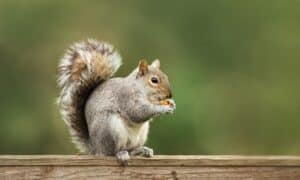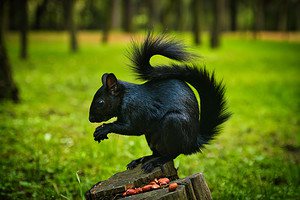Squirrels are a common sight worldwide, with species of the Sciuridae family found on every continent except for Antarctica and Australia. Over 65 species of these high-energy rodents live in North America, found in every state except Hawaii. These prolific animals are seemingly everywhere!
But just how prolific are they and how many babies do they have? With around 285 squirrel species in the world, there are many variations in gestation, litter sizes, and lifespans. With that in mind, we’ll take a look at how many babies a squirrel has on average.
How Many Babies Does a Squirrel Have?
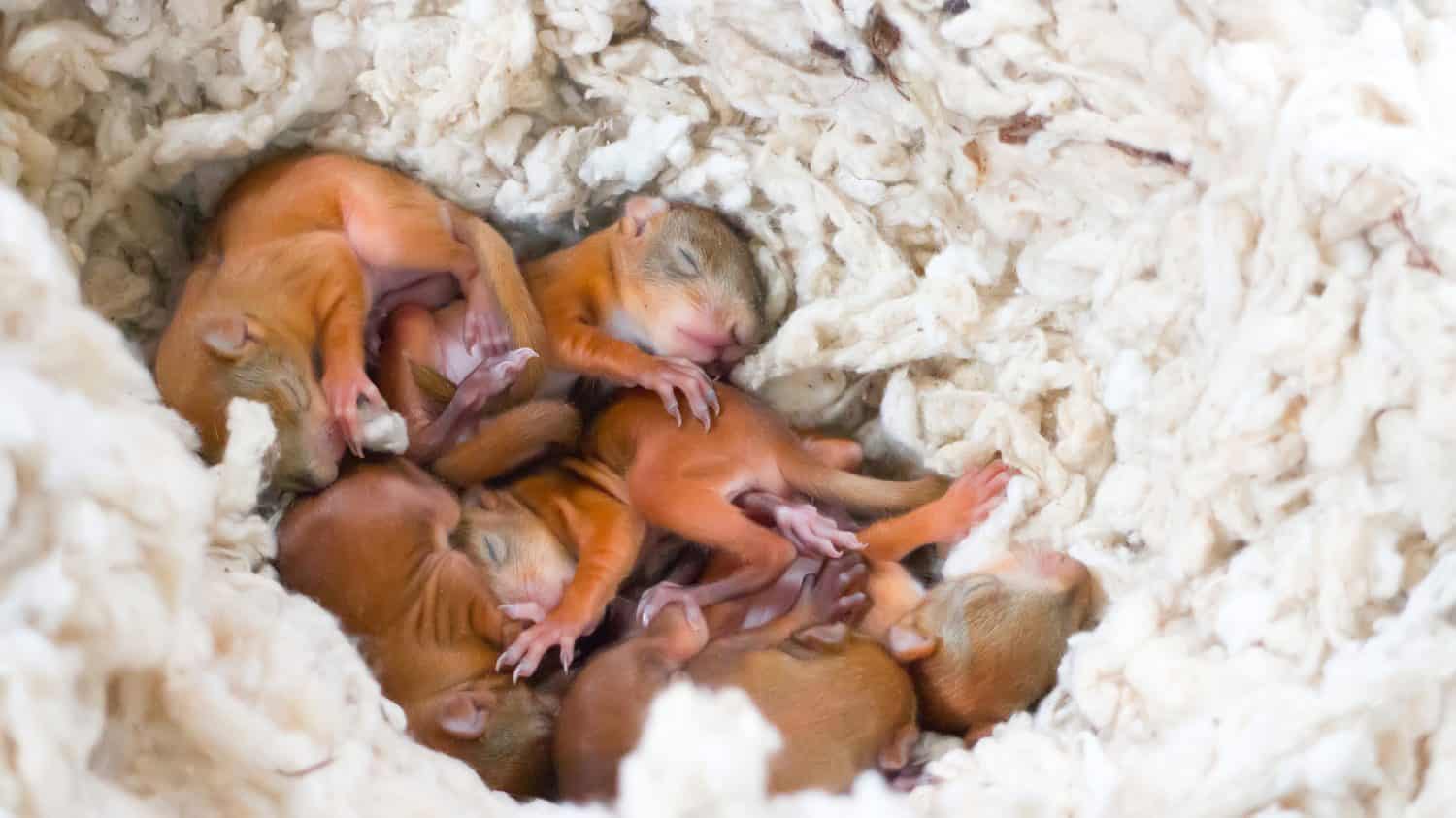
Squirrel litters vary in size depending on species, but most average 3-5 babies.
©Maximillian cabinet/Shutterstock.com
Tree squirrels such as gray, fox, and red squirrels typically have three to five babies (called kits) per litter. While they can have up to eight or nine babies, most litters are smaller. Squirrels have one or two litters per year. Early breeding starts in January, with the first litter born in early spring (March/April). Secondary breeding often occurs in June, after the first litter has left the nest. If a squirrel has a second litter, the kits are born in late July or August.
Average Litter Size for Different Species
| Squirrel Type | Scientific Name | Possible Litter Size | Average Litter Size |
|---|---|---|---|
| Eastern gray squirrel | Sciurus carolinensis | 1-7 kits | 5-6 kits |
| Fox squirrel | Sciurus niger | 2-5 kits | 3 kits |
| Southern flying squirrel | Glaucomys volans | 2-7 kits | 3-4 kits |
| 13-lined ground squirrel | Ictidomys tridecemlineatus | 3-14 kits | 10 kits |
| American red squirrel | Tamiasciurus hudsonicus | 1-8 kits | 3-5 kits |
How Long is Gestation?

Tree squirrel kits begin exploring outside of the nest at around 6 weeks old.
©Anna-Carina Nagel/Shutterstock.com
Squirrels can reproduce when they are 10-12 months old, with males reaching sexual maturity a few months before females. When female squirrels do become fertile, they mate with multiple partners over a few days to several weeks. Males fight with each other to gain dominance, with older males typically winning the right to the female. The male then chases the female, mating with her once he catches her.
Gestation varies by species, but North American tree squirrels and flying squirrels average 38-46 days. A southern flying squirrel’s pregnancy lasts around 40 days, while gray and fox squirrels give birth after approximately 44 days. The small red squirrel has a shorter gestation period of 36-38 days.
Where Squirrels Nest
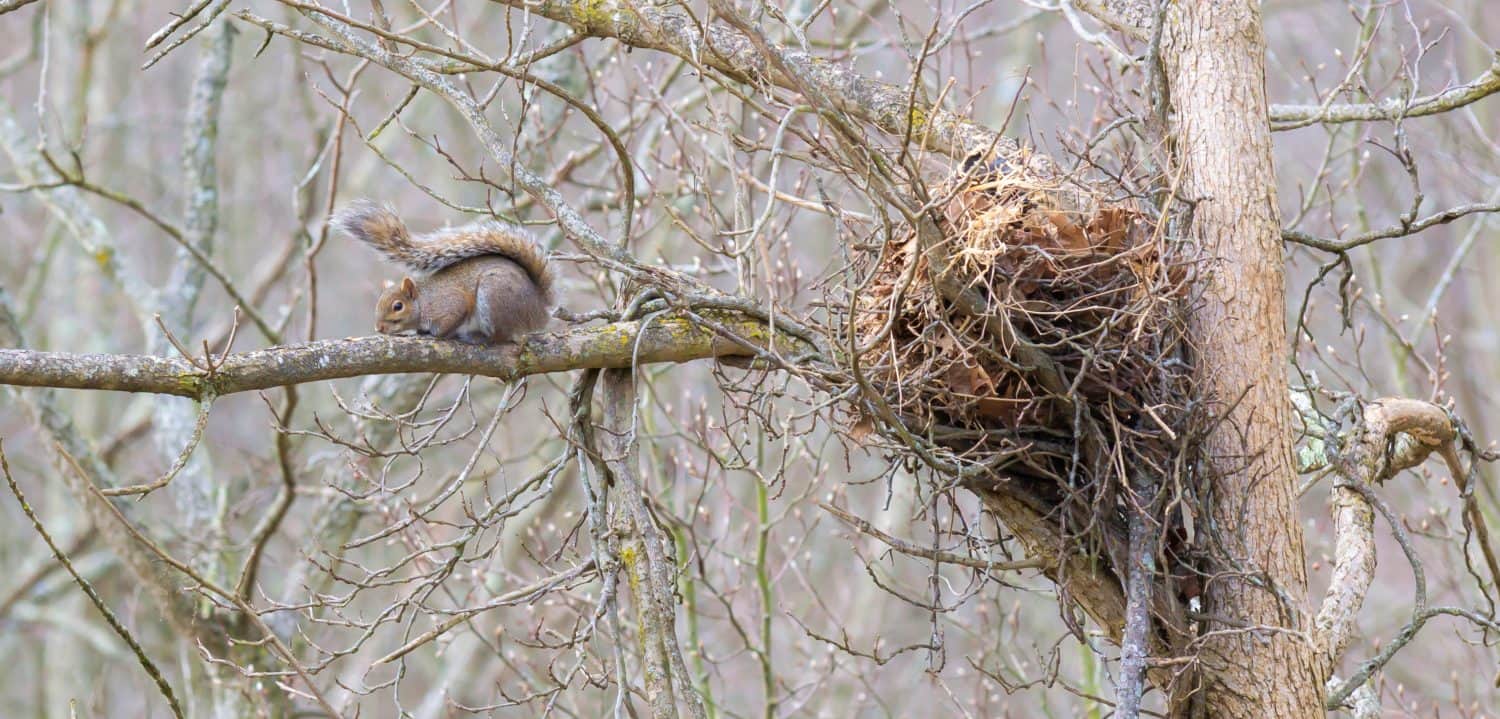
Gray squirrels and other tree squirrels build elaborate nests out of twigs, leaves, and moss.
©RDNichols/Shutterstock.com
Once a female tree squirrel is pregnant, she will make a nest (called a drey) in the crook of a tree branch, or a hollow tree. Alternatively, she will happily make a nest in a warm attic, chimney, or garage if it is available. Squirrels use leaves, moss, twigs, and other organic material to make their nests. If the nest is inside a building, the squirrel may use insulation, cardboard, or other man-made materials.
To prevent squirrels from nesting in residences, ensure there are no holes in soffit or roof eaves. Squirrels can fit through holes as small as 1.5 inches wide, so even the smallest hole can become an entry point. It’s also critical to make sure chimney caps and vents are secure.
In contrast to tree and flying squirrels, ground squirrels make nests in an elaborate system of underground burrows. These tunnel systems can be up to 30 feet long and 2-4 feet deep.
What Do Baby Squirrels Look Like?
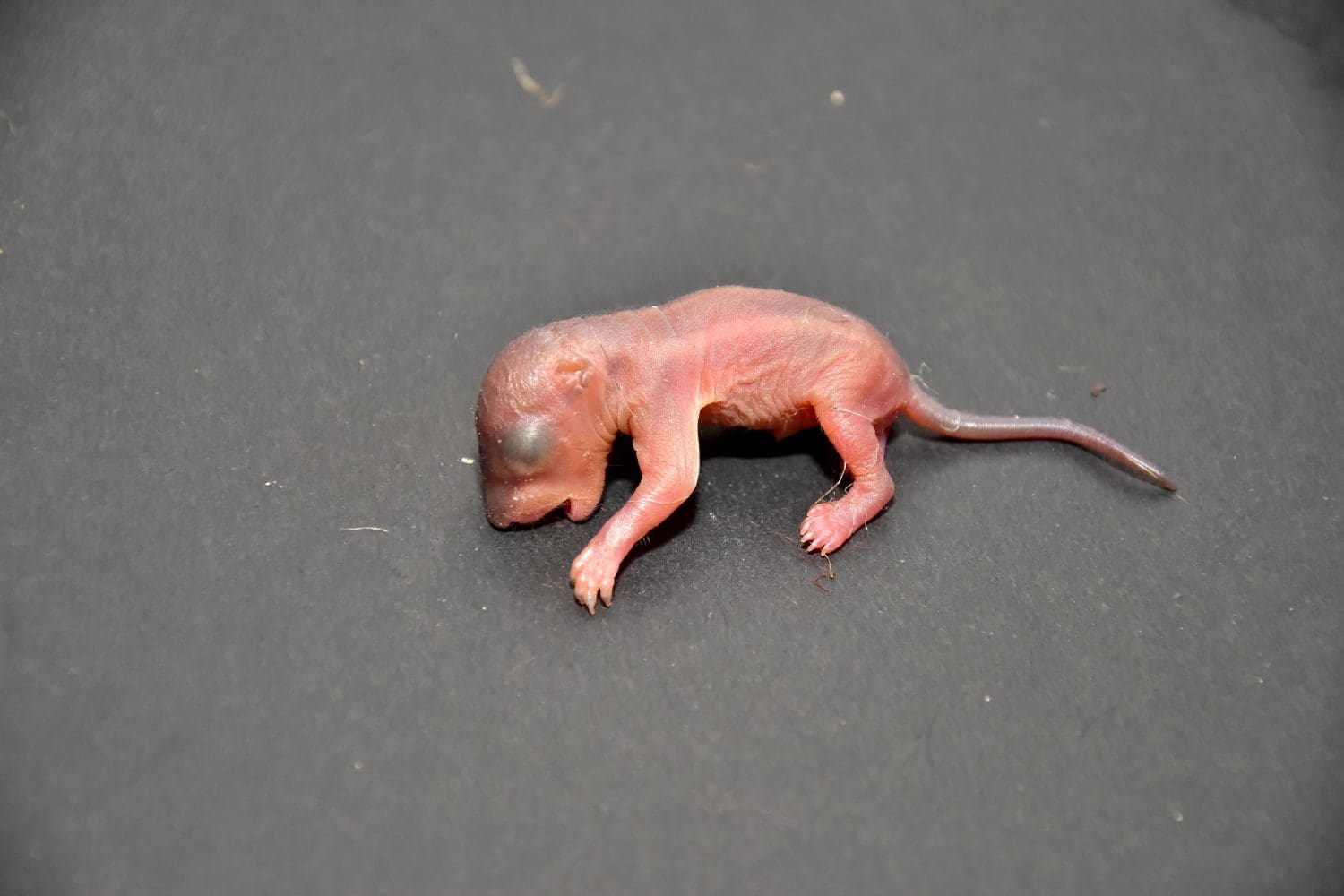
Newborn squirrels are often confused with neonates of other mammal species.
©chetanya kumar suman/Shutterstock.com
Kits are born hairless and pink, with their eyes and ears sealed shut. At this age, they are sometimes misidentified by people as they resemble many other neonate mammals, such as opossums, rats, or even cottontails. One way to tell these newborn species apart is to check the toenails. Squirrels will have dark nails, while opossums have clear ones.
Life Cycle of a Squirrel

The Eurasian red squirrel is found across Asia and Europe.
©Miroslav Hlavko/Shutterstock.com
At 1 week old, kits are still hairless, but begin to turn grayish in color. By 3 weeks of age, baby squirrels have a thin layer of fur on their bodies and rat-like tails. At 4 weeks, the kits’ are more fully furred and become recognizable as squirrels. Around this time, their eyes open and they become much more active. By 6 weeks old, the squirrels look like mini adults with bushy tails and begin exploring outside the nest. They are weaned at around 10 weeks old and independent at approximately 12 weeks
How Long Do Squirrels Live?
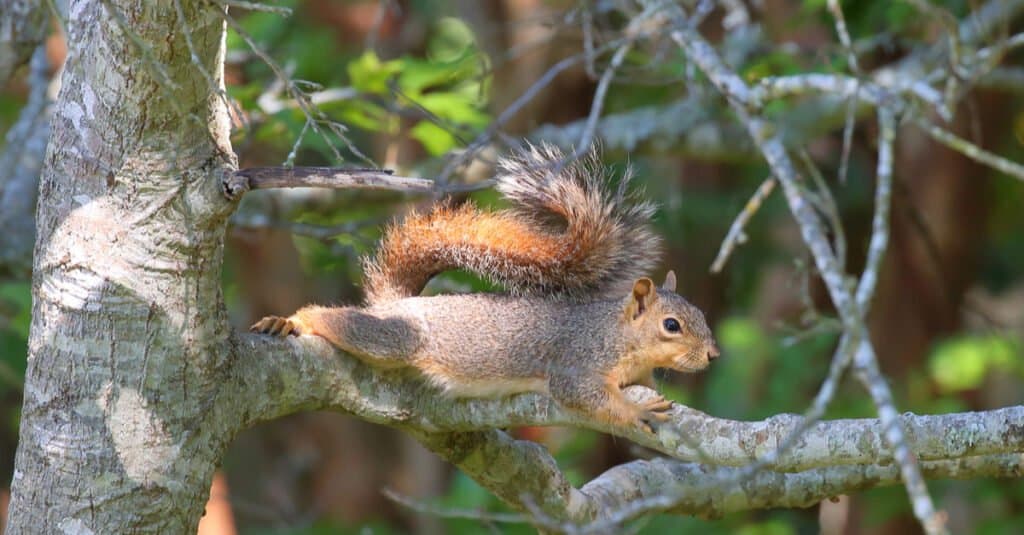
Although the fox squirrel is a tree squirrel, they spend much of their time on the ground foraging.
©JustPixs/Shutterstock.com
Squirrel lifespan also varies by species, but in the wild, they typically average 5-10 years. In captivity, these animals can live much longer since they don’t face natural or manmade threats such as predators, cats, traffic, or poison. The oldest wild gray squirrel on record died at the age of 12. In comparison, the oldest recorded captive squirrel (a resident of the Racine Zoo in Wisconsin) lived for 23 years and 6 months.
The photo featured at the top of this post is © iStock.com/Astrid Hinderks
Thank you for reading! Have some feedback for us? Contact the AZ Animals editorial team.




